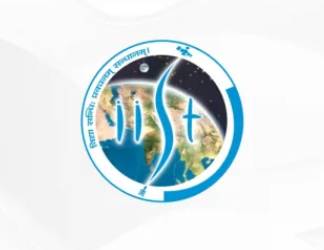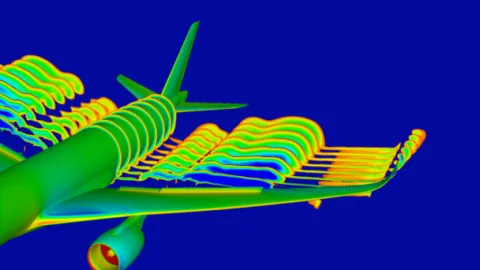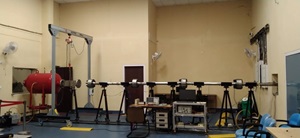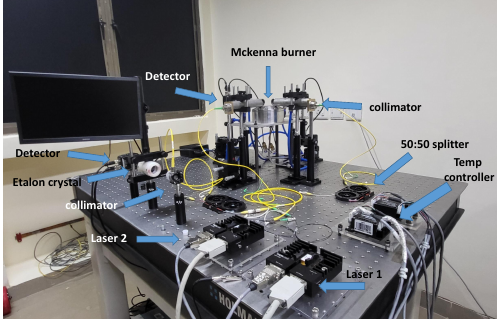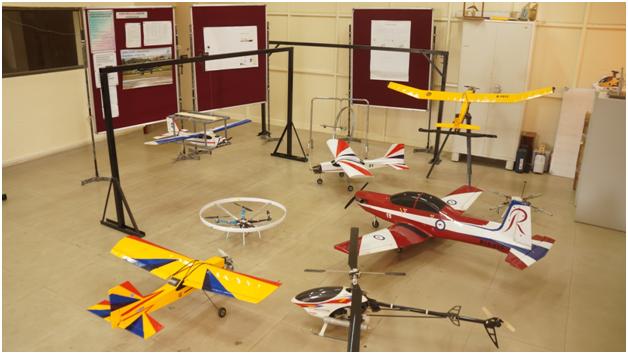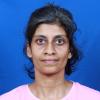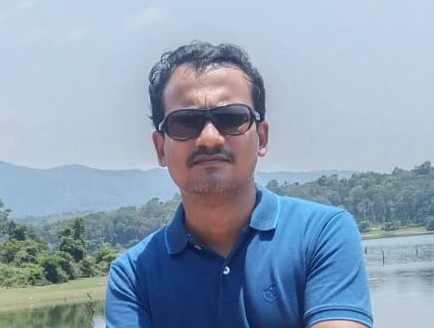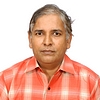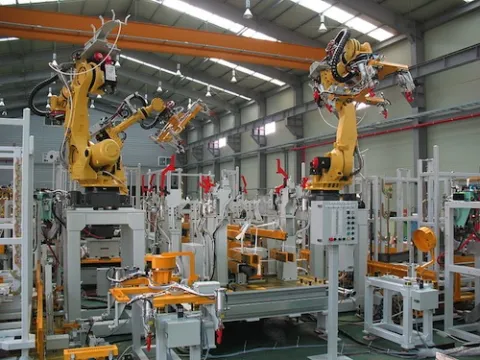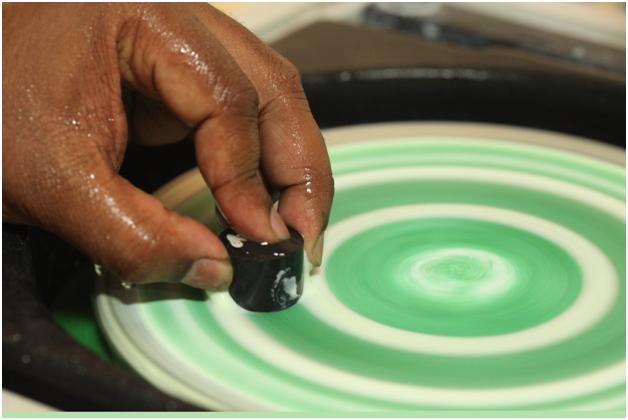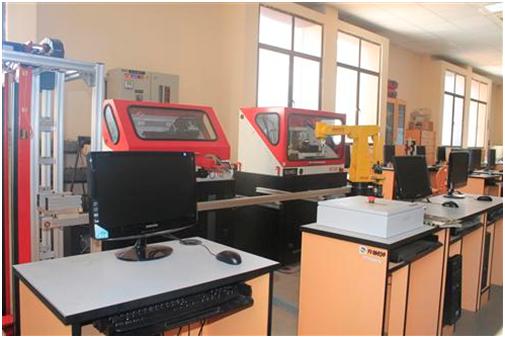In addition to ISRO funded projects, the faculty members of IIST are engaged in externally funded projects from national agencies/society/departments such as DST-SERB, ICSSR, MoES, DBT, Ministry of Electronics and Information Technology -MeitY, DRDO, KSCSTE etc, in the niche areas of space science technology and applications as listed below.
-
Advanced Materials
High temperature materials Materials with very low thermal conductivity and ability to withstand very high temperatures are very important in thermal protection systems in aerospace applications. Carbon and ceramics having high temperature capability need to be processed into highly porous structures to achieve light weight and high thermal insulation. The research at IIST focuses on the development of novel methods for processing of carbon and ceramic foams. We also undertake research on colloidal processing of ceramic powder for fabrication of near-net shape ceramic components
-
Aerodynamics and Flight Mechanics
- Hypersonic aerothermodynamics: Aerodynamic shape optimization
- Unsteady gas dynamics/Shock tunnel experiments
- Quantitative laser diagnostics for high enthalpy flows
- Computational fluid dynamics
- Experimental aerodynamics : Aeroacoustic flow instability
- Multi-disciplinary design optimization of aerospace vehicles
- Computational and experimental aerodynamics
- Lunar/interplanetary mission design, Low thrust transfers
- Machine learning for Aeropace applications
- High speed chemically reacting viscous flow with Cartesian mesh on GPU based parallel systems
- Numerical simulation of unsteady supersonic flows (external and internal flows) using higher order methods
- Optimal trajectory design
- Fuel optimum mission design for lunar soft landing at a specified location
- Aircraft system identification using machine learning
- Solving ODE/PDE using ML techniques
- Development of TDLAS sensors for high enthalpy flows
- Unsteady Aerodynamics; Flow instability & control
- Computational aeroacoustics
-
Applied and Adaptive Optics
In applied and adaptive opitcs, the broad research areas are singular optics (optical vortex), high numerical aperture focusing, speckle, coherence & Stokes holography and polarization imaging.
Application of optical weak measurement and correlation techniques for interferometry, polarimetry and spectroscopy with applications to space-based imaging and development of highly sensitive optical sensors and metrology tools.
Research is also being carried out on several aspects of classical optics such as wavefront analysis, phase estimation, and application of matrix methods in classical optics.
-
Astronomy & Astrophysics
From the birth of stars to the mysteries of black holes and the structure of the cosmos, Astronomy & Astrophysics research at IIST explores a wide spectrum of cosmic phenomena. Our team of six faculty members brings together extensive multiwavelength observational expertise and theoretical insight.
Key research themes
- Formation of massive stars in our Galaxy
- Investigation of the interstellar medium
- Accretion around compact objects
- Gamma-ray bursts and gravitational wave astronomy
- Intergalactic medium and galaxy halos
- Machine learning techniques to study astrophysical sources
Broader vision and collaboration
We are actively engaged in national and international collaborations and big projects.
- IIST faculty members are actively engaged in the Indian multiwavelength ASTROSAT mission.
- India is a member country of the upcoming Square Kilometre Array (SKA) observatory, the world’s largest radio telescope. IIST is a part of the SKA-India consortium, which oversees the educational and research activities related to SKA science in India.
- IIST is a member institute in the Belgo-Indian Network for Astronomy and Astrophysics (BINA)
Astronomy lab
At the IIST campus, there is an astronomical observatory with a 14-inch and an 8-inch telescope with imaging and spectroscopic capabilities. The facility is used for undergraduate and postgraduate labs where students get hands-on experience in carrying out interesting night sky observations. In addition, an 8-inch telescope is dedicated exclusively to outreach activities. The observatory facility is in the process of being upgraded with a new telescope.
Apart from this, there is an Astronomy Lab for instrument characterisation. This lab is also equipped with desktops and workstations for data reduction and analysis.
Studying astrophysics at IIST
Currently, IIST takes students through advanced JEE for a five-year dual degree (BTech in Engineering Physics and Master of Science in Astronomy & Astrophysics) program, of which the fourth and fifth years are dedicated to doing astronomy. In addition, a two-year Master of Science in Astronomy & Astrophysics for engineering graduates and MSc holders is offered every year. The students undertake one year of coursework followed by a year dedicated to a master’s thesis.Doing astrophysics at IIST
Students can enroll for the doctoral program in astrophysics in the Department of Earth and Space Sciences twice a year (in January and August).
IIST has an official summer internship program during June and July. The announcement of internship opportunities is made available on the IIST website typically in the month of April.
Anyone interested in a postdoctoral or research internship position is encouraged to contact individual faculty members.
-
Atmospheric Sciences
The Atmospheric Science group comprises three faculty members engaged in both numerical modeling and observational studies of the atmosphere. Their primary focus lies in enhancing mesoscale model performance through the assimilation of non-conventional data sources, including satellite observations, using advanced data assimilation techniques.
Group members also have expertise in deploying and analyzing data from atmospheric boundary layer towers to address key scientific questions. One faculty member specializes in aerosol measurements and investigates their impact on cloud microphysics and the radiation budget, particularly in the context of climate change.
The group’s research spans several thrust areas: monsoon climate studies, climate and mesoscale modeling, data assimilation, aerosols and their role in climate change, radiation–climate interactions, atmospheric boundary layer processes, the use of unmanned aerial vehicles (UAVs) as research platforms, and the development of miniaturized instrumentation for space applications. Recently, the group has also incorporated machine learning (ML) techniques to advance research across these domains.Key Research Areas:
- Atmospheric Modelling
- Data assimilation & Weather Predictability
- Aerosols and climate interactions
- Radiation–climate interactions
Studying Atmospheric Science in IIST
IIST currently admits students through the Advanced JEE examination into a five-year dual degree program, which awards a BTech in Engineering Physics and an MTech in Earth System Science. During the fourth and fifth years of this program, students focus on specialized courses in Atmospheric Science and Geology. Additionally, the institute offers a separate two-year MTech program in Earth System Science, open to graduates with an engineering degree or an MSc. This program includes one year of academic coursework followed by a year devoted to independent research culminating in an MTech thesis.
Research Facilities:
The Ponmudi Climate Observatory (PCO), operated by the IIST, is a premier research facility located atop the Western Ghats in Kerala at an elevation of 1,000 meters above mean sea level (8.76°N, 77.12°E). This high-altitude site offers a unique environment for atmospheric studies, particularly during the summer monsoon season when it is often enveloped by clouds, providing an ideal natural laboratory for investigating aerosol-cloud interactions and other atmospheric processes. Key Research Facilities at PCO include Aerosol Instrumentation, LIDAR Ceilometer, Cloud Condensation Nuclei Counter, Micro Rain Radar, Disdrometer etc. In addition to this, access to high-performance computing clusters are available for Atmospheric Modelling studies.
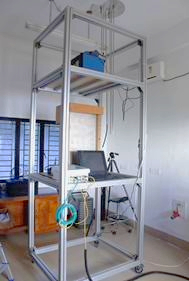
IIST Ponmudi Climate Observatory (IIST-PCO) Research Facilities @ IIST Ponmudi Climate Observatory
IIST has established a Climate Observatory at its Ponmudi Campus on the hilltop of the Western Ghats (PCO, 8.76°N, 77.12°E, 1 km, AMSL). It is equipped with state-of-the-art field instrumentation for measuring aerosol and cloud microphysics along with meteorological variables. Over the years, many observational campaigns covering greenhouse gases (GHG), meteorology, boundary layer, aerosol-cloud interactions, and radiation balance studies have been carried out by the faculty of IIST. These instruments are also extensively used for lab and teaching courses at IIST.
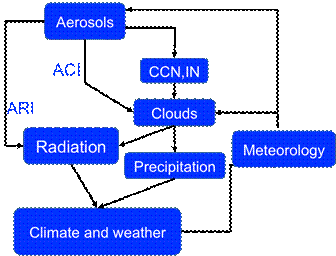
Aerosol-Cloud Interaction IIST Balloon Launch Facility
Atmospheric research is one of the strongholds of IIST, with a fully owned and dedicated research facility at PCO. The observatory is one of its kind in the country, with provisions for balloon-borne measurements from near-surface to stratosphere (35 km) in the frontiers of Atmospheric Sciences, Astronomy, Astrobiology, high energy Physics, and space technology development. Students/faculty at IIST may be encouraged to build and quickly test payloads and conduct high quality research in the lower Earth's atmosphere.
A new collaborative program on the measurement of vertical profile of ozone along with meteorological parameters at multiple sites (Ponmudi, Hyderabad, Nagpur, Jodhpur) has been initiated under the coordination and support of the Earth & Climate Area (ECSA) of the National Remote Sensing Centre (NRSC/ISRO). As part of this study, coordinated monthly launches are undertaken at four sites.
Balloon launch from Ponmudi Climate Observatory
Tethered balloons for testing small payloads up to 1 km altitude
Tethered balloons of volume 9.0 m3 capable of carrying 1.0-3.0 kg payload weight up to an altitude of about 1 km are also available for conducting various scientific experiments
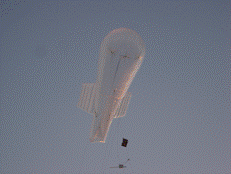
Photograph showing the hoisting of a Tethered balloon (Kytoon). Optical particle counter (OPC) is seen tied to the belly strings. Small payload development for space research
A frequent access to space for university groups like IIST to make small autonomous payloads that will perform high-quality scientific investigations has become available with the maturing of the ISRO launch capabilities. This, in turn, requires training of graduate students, young scientists and engineers in “hands-on” research techniques used in space experiments. Student satellite (Studentsat) program (SSP), which is a balloon-based interdisciplinary program, provides an educational experience to students, young scientists, and engineers in the design and data analysis of a space experiment (up to 35 km). Studentsat can have a compendium of lightweight payloads (sensors) for remote sensing, atmospheric sciences, biology, chemistry, and astronomy designed by students within the mass and power constraints. It offers opportunities to have hands-on experience on complex processes of design, development, testing, and integration of state-of-the-art sensors to probe the space environment and data analysis. It provides an affordable way to acquire the basic knowledge and many challenges in building a payload for space research and technological development. It offers an opportunity to the space scientist to gain the first experience of the real space mission program, starting with design, testing, integration, launching, data analysis, and presentation of results. It offers the students (undergraduate and postgraduate students and Ph.D.) to design and build a small scientific satellite payload to gain first-hand experience of the actual space mission program /planetary exploration and nurture future space scientists and engineers in the country.
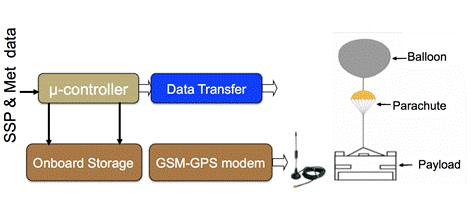
Student satellite (Studentsat) program -
Atomic and Molecular Physics
In atomic and molecular physics both experimental and theoretical research is being done. The areas include X-ray emission spectroscopy of highly charged ions, molecular photo absorption spectroscopy, mass spectrometry of molecular ions, bio molecules, cluster ions and giant resonances.
-
Biomaterials
Nanostructured materials assume great importance in tissue engineering and drug delivery applications. We work on development of nanofibrous scaffolds based on natural polymers for medical applications such tissue engineering and wound dressing materials.
Polymeric drug conjugates, nanogels and polyelectrolyte complexes are being developed and explored for effective delivery of hydrophobic drugs. -
Climate Economics and Vulnerability studies
Area focuses on the economic impacts of climate changes on economic development and livelihood of the people. The studies also focus on the relationships between climate variability and economic vulnerability.
-
Condensed Matter Physics
In condensed matter physics, experimental research focuses on topics such as atomic layer deposition, thin film electronics, thin film solar cells, semiconductors, metal nanostructures, self-assembly by molecular beam epitaxy (MBE), study of low dimensional structures by scanning tunneling microscopy (STM) and scanning tunneling spectroscopy (STS).
Theoretical research is being carried out in quantum many body systems, with particular emphasis on spin systems and topological order. Exactly solvable models such as the Kitaev model and its variants are being studied with a view to understanding the nature of various topological excitations. -
Control systems
The group has 5 faculty members working in various specialized areas of modern analog and digital control system. Major areas of research currently control group is dealing with are:
- Control based Cryptography for secure communication
- Model reduction for uncertain systems: Continuous and Discrete Systems
- Stochastic Control and Optimization.
- Power system control
-
Electronics and navigation systems
The group has 3 faculty members working in various specialized areas of modern navigation systems. Major areas of research currently control group is dealing with are:
- Robotics / Rover systems
- Power electronics and drives
- Navigation and sensor systems
- Sensor fusions / object identification
-
English Language Teaching (Communication Skills)
English being the language of globalization is strongly linked to modernization and development. Research in English language teaching puts emphasis on the key skills like, listening, speaking reading and writing through intensive language training programmes. It will look into the theories of language learning and teaching.
-
Industrial Mathematics and softcomputing
We invoke various tools from physics and mathematics to arrive at a mathematical model of a real life system. We make use of the softcomputing algorithms like artificial neural networks, genetic algorithms, fuzzy logic technique for the simulation of various real life systems.
-
International Trade Distortions
Area focuses on the studies related to the impact of trade distorting measures such as Technical Barriers to Trade (TBTs), sanitary and phytosanitary measures (SPS), quotas, exports restrictions, distribution restrictions etc to international trade.
-
Low Temperature Condensed Matter Physics
Probing interactions of electrons and their elementary excitations close to Fermi level is of fundamental (as well as of practical relevance) interest to understand the electronic properties in strongly correlated electron systems.
We use spectroscopic Imaging Scanning Tunnelling Microscope (SI-STM) to visualize the quantum realm of these electronic structures both in real space(r-space) and momentum space (k-space). -
Materials manufacturing & Industrial engineering
- Aerospace Materials/Composites
- Materials Forming/Powder metallurgy/Welding
- Machining and Precision Manufacturing for Aerospace applications
- Subtractive and Additive manufacturing of Aerospace Materials
- Supply chain management; Cellular manufacturing systems
- Optimization techniques in manufacturing
- Investigation of electro-active shape memory polymer composites for aerospace applications
- Sensitivity studies on the influence of process parameters on thermo-mechanical properties
- and functional performance of ablative composites and improvement efforts
- Experimental studies of Flux bounded Tungsten Arc welding
- Investigations on Fine finishing of surfaces using elastic abrasives
- Minimum damage machining of fiber-reinforced composites using eccentric sleeve grinding
- Stochastic modelling of abrasive processes; Abrasive processing of additive manufactured components.
- Aircraft Landing Problem using a hybrid particle swarm optimization (HPSO) algorithm
- Combined arrival-departure aircraft sequencing and scheduling problem
- Simulation model for determining the feasibility of reduced inter-arrival spacing between aircrafts
-
Mathematical Control Theory
The problems of fundamental interest in control theory are that of controllability, observability and optimal control. We investigate these problems by using efficient tools from the theory of Differential equations and Functional Analysis. We deal with both linear and nonlinear problems.
-
Mathematical Elasticity, Homogenization, Partial Differential Equations
When the thickness of the elastic body is small, lower dimensional theories have been proposed, depending on mechanical and geometrical nature of the body, as approximations of usual three-dimensional theory. But it is not evident which is the model most suited to a particular case in mind. Consequently, before approximating the exact solution of a given lower dimensional model, we should first know whether it is “close enough” to the exact solution of the three-dimensional model it is intended to approximate. Thus one is lead to the question of mathematically justifying lower-dimensional models starting from the three-dimensional model.
-
Nanocomposites
Nanocomposites for structural applications Development of high strength toughened epoxy nanocomposite by interphase modification of nanofiller and polymer matrix is under progress. Chemical modification has been carried out on the surface of carbon nanotube and graphene oxide to improve mechanical properties of epoxy composite system.
Development of nanoclay based rubber nanocomposites for improved gas barrier properties have been developed.
-
Nanotechnology
Nano-electronics: Charge transport mechanisms through nanostructures and their applications; resistive memory switching in nanostructures; single nanowire transistors.



